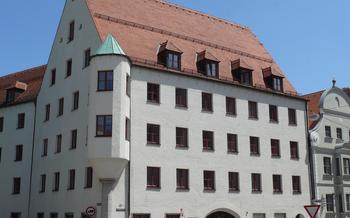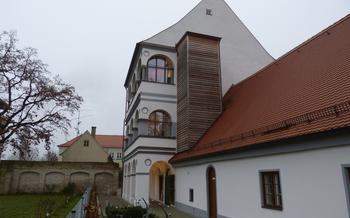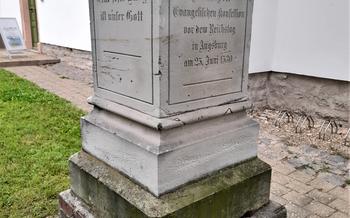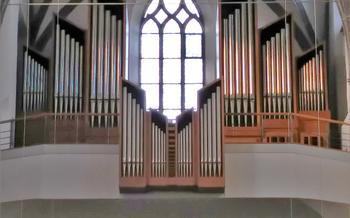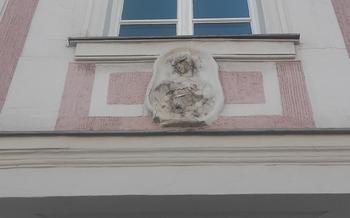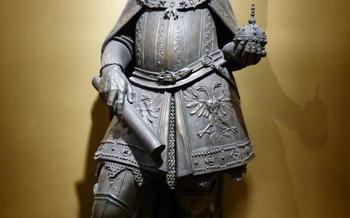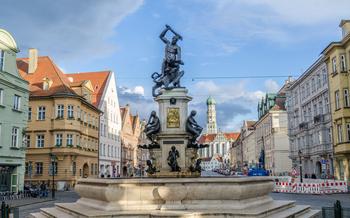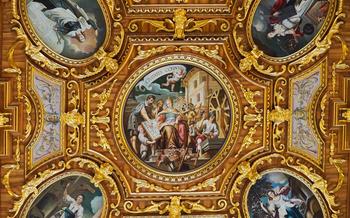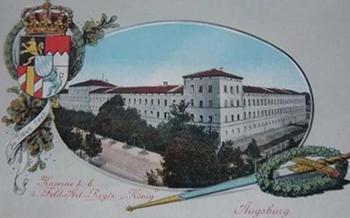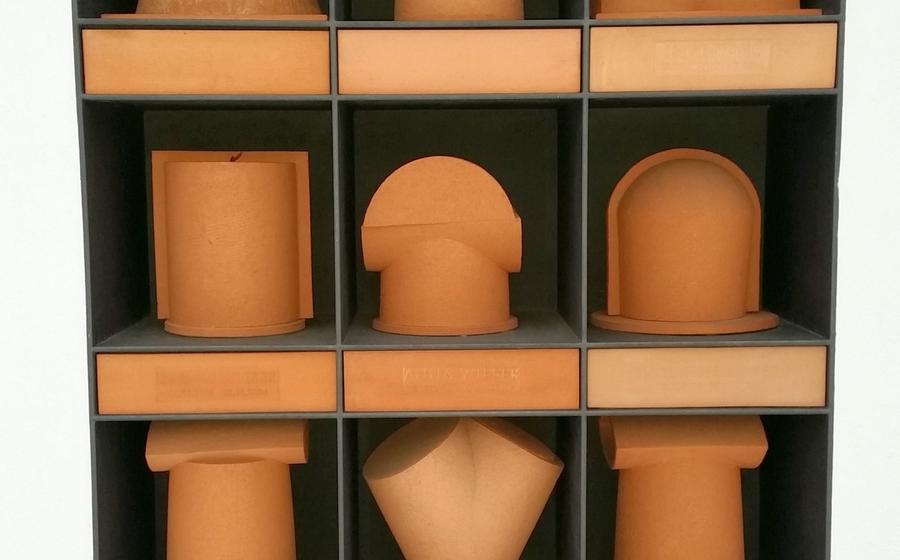
Augsburg Protestant Cemetery
- The Augsburg Protestant Cemetery: A Haven of Tranquility and History
- Artistic Masterpieces: Sculptures and Epitaphs
- Prominent Personalities: Resting Places of the Famous
- The Fugger Chapel: A Symbol of Opulence and Piety
- Guided Tours: Unveiling the Cemetery's Secrets
- Seasonal Charms: The Cemetery in Different Seasons
- Nature's Embrace: A Sanctuary for Flora and Fauna
- Events and Exhibitions: Cultural Offerings at the Cemetery
- Preservation and Conservation: Safeguarding the Past
- Accessibility and Visitor Information
- Photography Etiquette: Capturing Memories Respectfully
- Local Customs and Traditions: Honoring the Dead
- Beyond the Cemetery: Exploring Augsburg's Rich History
- Insider Tip: Hidden Gems and Secret Spots
The Augsburg Protestant Cemetery: A Haven of Tranquility and History
Augsburg's Protestant Cemetery is a captivating sanctuary of history, art, and tranquility, nestled in the heart of the city. Founded in the 16th century as a burial ground for the city's Protestant community, it has evolved into a remarkable cultural heritage site, attracting visitors from around the world.
Situated on the outskirts of Augsburg's historic center, the cemetery offers a serene escape from the urban hustle and bustle. Its sprawling grounds, dotted with ancient trees and meticulously maintained graves, create an atmosphere of profound peace and contemplation. As you wander through its pathways, you'll be transported back in time, surrounded by the stories and legacies of Augsburg's past residents.
The Augsburg Protestant Cemetery holds immense historical significance, as it bears witness to the city's religious and cultural transformations. It serves as a poignant reminder of Augsburg's rich Protestant heritage and the struggles faced by the community during times of religious persecution. The cemetery's unique atmosphere, imbued with a sense of history and reverence, makes it a truly special place to visit.
Artistic Masterpieces: Sculptures and Epitaphs
The Augsburg Protestant Cemetery is a treasure trove of artistic masterpieces, showcasing the intricate craft of gravestone carving and the profound symbolism embedded within these works of art. The sculptures adorning the graves range from simple and understated to elaborate and ornate, each telling a unique story about the deceased.
The skilled hands of master craftsmen have transformed ordinary stone into expressive works of art, capturing the essence of the individuals they commemorate. From lifelike representations of the deceased to allegorical figures and intricate floral motifs, the sculptures showcase the artistry and creativity of their creators.
Epitaphs, the inscriptions on the gravestones, are another poignant element of the cemetery's artistic legacy. These heartfelt expressions of grief, remembrance, and hope provide glimpses into the lives and personalities of those who have passed on. Whether it's a simple verse, a heartfelt poem, or a detailed account of the deceased's accomplishments, each epitaph adds a layer of depth and meaning to the cemetery's rich tapestry.
Together, the sculptures and epitaphs in the Augsburg Protestant Cemetery form a powerful narrative of life, death, and remembrance. They offer visitors a glimpse into the past, inviting them to contemplate the lives of those who have gone before and the enduring legacy they have left behind.
Prominent Personalities: Resting Places of the Famous
The Augsburg Protestant Cemetery is the final resting place of numerous notable figures who have made significant contributions to German history, culture, and society. Among them are artists, musicians, writers, scientists, and industrialists.
One of the most renowned figures buried in the cemetery is Bertolt Brecht, a playwright, poet, and theater director who is considered one of the most influential figures in 20th-century German literature. His grave is marked by a simple headstone adorned with a bronze bust.
Another notable figure is Leopold Mozart, the father of the renowned composer Wolfgang Amadeus Mozart. Leopold was a talented musician and composer himself, and his grave is a popular destination for music lovers.
The cemetery is also home to the graves of several prominent members of the Fugger family, one of the wealthiest and most influential families in Augsburg's history. The Fuggers were merchants and bankers who played a major role in the city's economic development. Their opulent mausoleum is a testament to their wealth and power.
Other notable figures buried in the cemetery include the painter Hans Holbein the Younger, the composer Heinrich Isaac, and the writer Bertha von Suttner. These individuals have left an indelible mark on German culture, and their graves serve as reminders of their contributions.
The Fugger Chapel: A Symbol of Opulence and Piety
Within the Augsburg Protestant Cemetery lies a true architectural treasure—the Fugger Chapel. Built between 1566 and 1577, this magnificent chapel stands as a testament to the wealth and piety of the Fugger family, one of Augsburg's most prominent merchant dynasties.
Designed by Elias Holl, a renowned architect of the Renaissance period, the Fugger Chapel is a masterpiece of Renaissance architecture. Its exterior façade is adorned with intricate carvings, sculptures, and decorative elements, showcasing the artistic prowess of the era. Inside, the chapel is equally impressive, boasting a stunning vaulted ceiling, ornate frescoes, and stained-glass windows.
The Fugger Chapel is not just a symbol of opulence but also a reflection of the Fugger family's deep religious devotion. The chapel served as a private place of worship for the Fugger family and their descendants. It contains numerous tombs and epitaphs dedicated to deceased family members, offering a glimpse into their lives and legacies.
One of the most notable features of the Fugger Chapel is the bronze epitaph of Jakob Fugger the Rich, the patriarch of the Fugger family. Created by Hans Daucher, a prominent sculptor of the time, the epitaph depicts Jakob Fugger kneeling in prayer, surrounded by allegorical figures representing his virtues.
The Fugger Chapel remains an integral part of the Augsburg Protestant Cemetery, attracting visitors from around the world. It stands as a testament to the Fugger family's enduring influence on the city's history and culture, and serves as a reminder of the deep-rooted faith that shaped their lives.
Guided Tours: Unveiling the Cemetery's Secrets
The Augsburg Protestant Cemetery offers guided tours that provide a deeper understanding of its history, symbolism, and notable burials. Knowledgeable guides lead visitors through the serene pathways, sharing fascinating stories and anecdotes about the individuals laid to rest here. These tours offer a unique opportunity to learn about the lives and legacies of prominent figures, the art of gravestone carving, and the cultural significance of the cemetery.
During the guided tours, visitors gain insights into the symbolism and motifs depicted in the sculptures and epitaphs, shedding light on the beliefs and values of past generations. Guides also share personal stories and anecdotes about the individuals buried in the cemetery, bringing history to life and creating a deeper connection with the past. Whether you're a history buff, an art enthusiast, or simply curious about the stories behind the stones, these guided tours offer an immersive and enriching experience.
Seasonal Charms: The Cemetery in Different Seasons
The Augsburg Protestant Cemetery unveils its distinctive beauty throughout the changing seasons. Each season offers a unique perspective on the cemetery's serene atmosphere and rich history.
Spring brings a vibrant transformation to the cemetery as nature awakens from its winter slumber. The grounds burst into color with blooming flowers, adding a cheerful touch to the tranquil surroundings. The air is filled with the sweet fragrance of blossoms, creating a sense of renewal and tranquility.
Summer casts a golden glow over the cemetery, bathing the gravestones in a warm, ethereal light. The lush foliage provides a verdant backdrop for the intricate sculptures and epitaphs, creating a picturesque landscape. Visitors can enjoy the shade of the trees as they wander along the pathways, contemplating the lives and stories of those who rest here.
Autumn brings a sense of nostalgia and reflection to the cemetery. The leaves of the surrounding trees transform into vibrant hues of red, orange, and yellow, creating a stunning tapestry of color. The crisp air invites visitors to take a leisurely stroll, savoring the beauty of the changing seasons and reflecting on the passage of time.
Winter casts a serene and peaceful blanket of snow over the cemetery, transforming it into a winter wonderland. The snow-covered graves and mausoleums create a picturesque scene, inviting visitors to pause and appreciate the tranquil beauty of this sacred space. The silence of the winter season provides an opportunity for contemplation and remembrance, allowing visitors to connect with the spirits of those who have passed on.
The Augsburg Protestant Cemetery offers visitors a unique and immersive experience in every season. Whether it's the vibrant colors of spring, the golden glow of summer, the nostalgic hues of autumn, or the serene beauty of winter, there is always something special to discover in this historic cemetery.
Nature's Embrace: A Sanctuary for Flora and Fauna
Beyond its historical and cultural significance, the Augsburg Protestant Cemetery is also a haven for flora and fauna. The serene environment and diverse habitats within the cemetery provide a sanctuary for a variety of plant and animal species.
The mature trees that line the pathways offer nesting sites for birds, while the lush greenery provides food and shelter for insects and small mammals. The cemetery's ponds and water features attract waterfowl and other aquatic creatures, adding to the biodiversity of the area.
Visitors to the cemetery can enjoy peaceful birdwatching sessions, observing the antics of feathered friends amidst the tranquil surroundings. The cemetery's gardens and flowerbeds are a delight for nature enthusiasts, showcasing a vibrant array of blooms throughout the year.
The Augsburg Protestant Cemetery serves as a reminder of the interconnectedness of life and death, where the past and present converge in a harmonious embrace of nature. It is a place where history, art, and ecology intertwine, creating a unique and awe-inspiring sanctuary for both the living and the departed.
Events and Exhibitions: Cultural Offerings at the Cemetery
The Augsburg Protestant Cemetery is not only a place of remembrance but also a vibrant cultural hub. Throughout the year, the cemetery hosts a variety of events and exhibitions that celebrate art, history, and the unique atmosphere of this sacred space.
Concerts, art exhibitions, and other cultural events are regularly organized within the cemetery grounds. These events provide an opportunity to experience the cemetery in a new light, while also showcasing the talents of local artists and performers.
Temporary exhibitions are also held at the cemetery, often highlighting specific themes or artists. These exhibitions offer visitors a deeper dive into the history and symbolism of the cemetery, as well as the lives and works of those buried within its walls.
Attending these events and exhibitions is a wonderful way to engage with the cultural heritage of Augsburg and gain a deeper appreciation for the significance of the Protestant Cemetery. Whether you're a history buff, an art enthusiast, or simply looking for a unique and enriching experience, the cemetery has something to offer everyone.
Preservation and Conservation: Safeguarding the Past
The Augsburg Protestant Cemetery is not only a place of remembrance but also a valuable cultural heritage site that requires ongoing preservation and conservation efforts. The passage of time, weather conditions, and environmental factors can take a toll on the cemetery's structures, sculptures, and vegetation. To ensure that this unique site remains intact for future generations, several initiatives have been undertaken.
The cemetery's administration, in collaboration with local authorities and heritage organizations, regularly conducts restoration and maintenance work. This includes cleaning and repairing gravestones, restoring sculptures, and preserving the chapel's interior. Specialized techniques and materials are employed to minimize damage to the original fabric of the cemetery while maintaining its historical integrity.
One of the challenges faced in preserving the cemetery is the need to balance conservation with accessibility. While the cemetery is open to the public, measures are taken to prevent excessive foot traffic and damage to sensitive areas. This includes limiting access to certain sections during restoration work and implementing guided tours that minimize the impact on fragile elements.
Public support plays a crucial role in preserving the Augsburg Protestant Cemetery. Donations, sponsorships, and volunteer efforts contribute to the ongoing maintenance and restoration projects. By raising awareness about the cemetery's historical significance and encouraging responsible visitation, visitors can help ensure that this unique heritage site continues to flourish for centuries to come.
Accessibility and Visitor Information
The Augsburg Protestant Cemetery welcomes visitors from all walks of life, ensuring that everyone can experience its historical and cultural significance. Accessibility has been thoughtfully considered, with ramps and designated paths allowing individuals with disabilities to navigate the grounds comfortably.
For a comprehensive understanding of the cemetery's history and symbolism, guided tours are highly recommended. These tours, led by knowledgeable experts, provide insights into the lives of those buried here, the stories behind their graves, and the artistic and cultural significance of the cemetery's features.
Before embarking on your visit, it's advisable to stop by the visitor center. Here, you can gather informative brochures, maps, and historical accounts to enhance your exploration. The friendly staff is also available to answer any questions and provide guidance.
To make the most of your time, it's recommended to allocate at least an hour for your visit. This will allow you to wander through the pathways, admire the sculptures and epitaphs, and soak in the tranquil atmosphere of this unique heritage site.
Photography Etiquette: Capturing Memories Respectfully
When visiting the Augsburg Protestant Cemetery, it is essential to be mindful of the sacred and respectful nature of the site. Photography is permitted, but visitors are expected to adhere to certain guidelines to ensure they do not disturb mourners or damage the graves.
Here are some tips for respectful photography in the cemetery:
-
Be considerate of mourners: Avoid taking photographs near people who are grieving or visiting the graves of loved ones. Be mindful of their privacy and emotions, and do not intrude on their personal moments.
-
Obtain permission: If you wish to photograph a specific grave or mausoleum, it is advisable to seek permission from the family members or the cemetery authorities. This shows respect for the deceased and their relatives.
-
Do not damage the graves: Be careful not to step on or lean against the graves when taking photographs. Avoid placing tripods or other equipment on the graves, as this can cause damage to the headstones or surrounding plants.
-
Capture the essence of the cemetery: Instead of focusing solely on individual graves, try to capture the overall atmosphere and beauty of the cemetery. Photograph the pathways, trees, sculptures, and other features that contribute to the unique character of the site.
-
Respect the privacy of others: Be aware of other visitors in the cemetery and avoid photographing them without their consent. Respect their right to privacy and do not intrude on their enjoyment of the site.
By following these guidelines, you can capture beautiful and respectful photographs of the Augsburg Protestant Cemetery while honoring the memory of those who rest there.
Local Customs and Traditions: Honoring the Dead
The Augsburg Protestant Cemetery is a place of reverence and remembrance, where visitors are expected to behave respectfully. When visiting, please observe the following customs and traditions:
- Silence and Respect: Maintain a quiet and respectful demeanor. Avoid loud talking, laughter, or any behavior that may disturb the peace of the cemetery.
- Appropriate Attire: Dress modestly and appropriately, as the cemetery is a sacred space. Shorts, tank tops, and revealing clothing are generally not considered suitable.
- Stay on Designated Paths: To protect the graves and the surrounding environment, stay on the designated paths and avoid walking on or near the graves themselves.
- Photography Etiquette: Be mindful of others when taking photographs. Avoid using flash or taking photos of mourners or visitors without their permission.
- Respect for Memorials: Do not touch or lean on tombstones or other memorials. These memorials are delicate and should be treated with care.
- Floral Tributes: If you wish to leave flowers, place them in the designated areas or on the graves of your loved ones.
- Mourners and Visitors: Be considerate of mourners and visitors who may be visiting the cemetery to grieve or pay their respects. Avoid intruding on their privacy or causing any disturbance.
By following these customs and traditions, you can demonstrate respect for the deceased, their families, and the sanctity of the Augsburg Protestant Cemetery.
Beyond the Cemetery: Exploring Augsburg's Rich History
Augsburg, a city steeped in history, offers a treasure trove of attractions beyond the Protestant Cemetery. For a comprehensive exploration of the city's rich heritage, history buffs should include the following sites in their itinerary:
-
Augsburg Cathedral: A magnificent Gothic masterpiece, the cathedral boasts stunning stained glass windows, intricate carvings, and a rich history dating back to the 11th century.
-
Perlachturm: Ascend the Perlachturm, a 10th-century tower that offers panoramic views of the city and the surrounding countryside.
-
Schaezlerpalais: This opulent Rococo palace houses a collection of European paintings, sculptures, and decorative arts.
-
Fuggerei: Founded in the 16th century, the Fuggerei is the world's oldest social housing project and provides a glimpse into the city's charitable past.
-
Mozarthaus Augsburg: Music lovers can visit the birthplace of Wolfgang Amadeus Mozart, where they can learn about his early life and musical influences.
Follow this comprehensive itinerary to delve into Augsburg's diverse cultural heritage and make the most of your visit.
Insider Tip: Hidden Gems and Secret Spots
Venture beyond the main paths to discover hidden gems within the Augsburg Protestant Cemetery. Seek out the tranquil corners, where nature reclaims the spaces between the graves, creating a sense of serene decay. Capture the ethereal beauty of the morning mist enveloping the cemetery, casting an otherworldly glow on the sculptures and mausoleums. For a unique perspective, ascend the tower of the St. Ulrich's Church, offering panoramic views of the cemetery and the city skyline. Insider tip: Visit the cemetery during the "Lange Nacht der Friedhöfe" (Long Night of the Cemeteries) event, when the cemetery transforms into a magical realm, illuminated by lanterns and candles, offering guided tours and musical performances.
